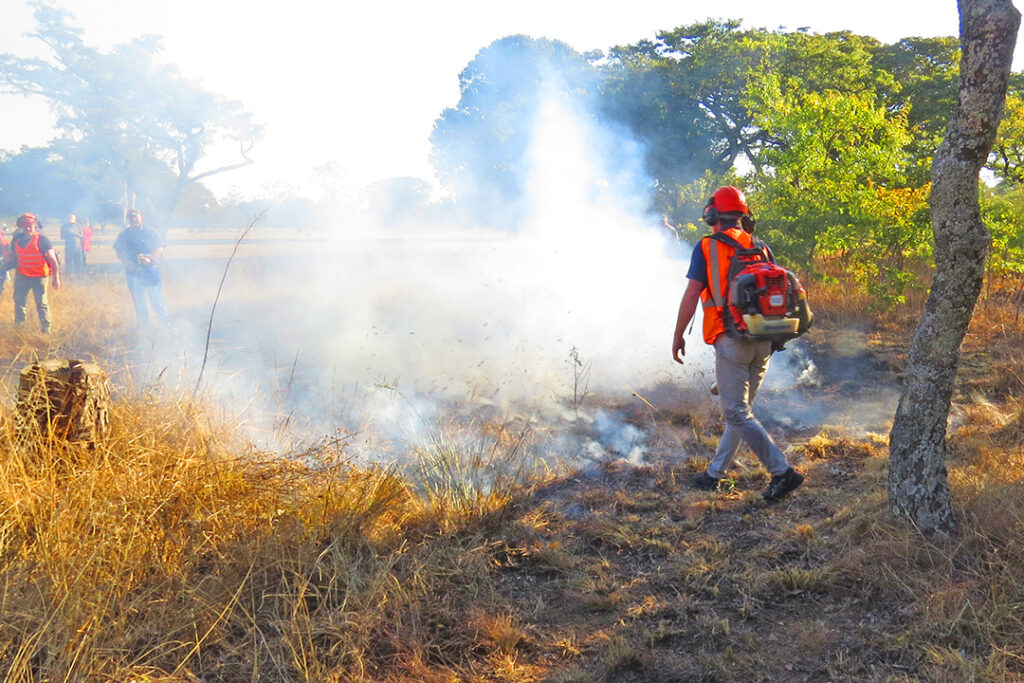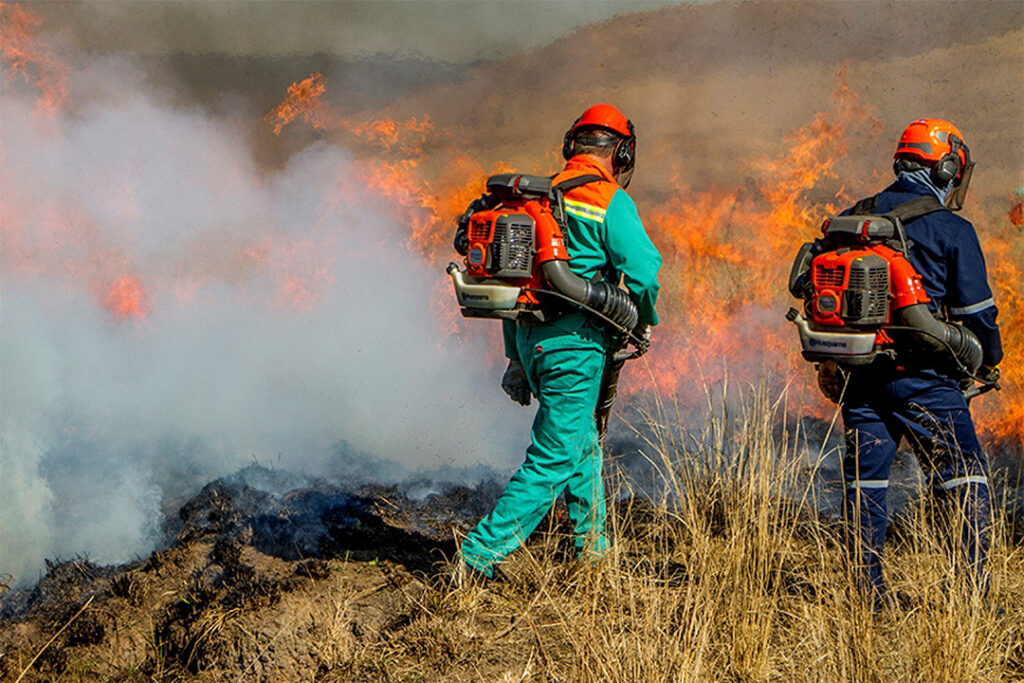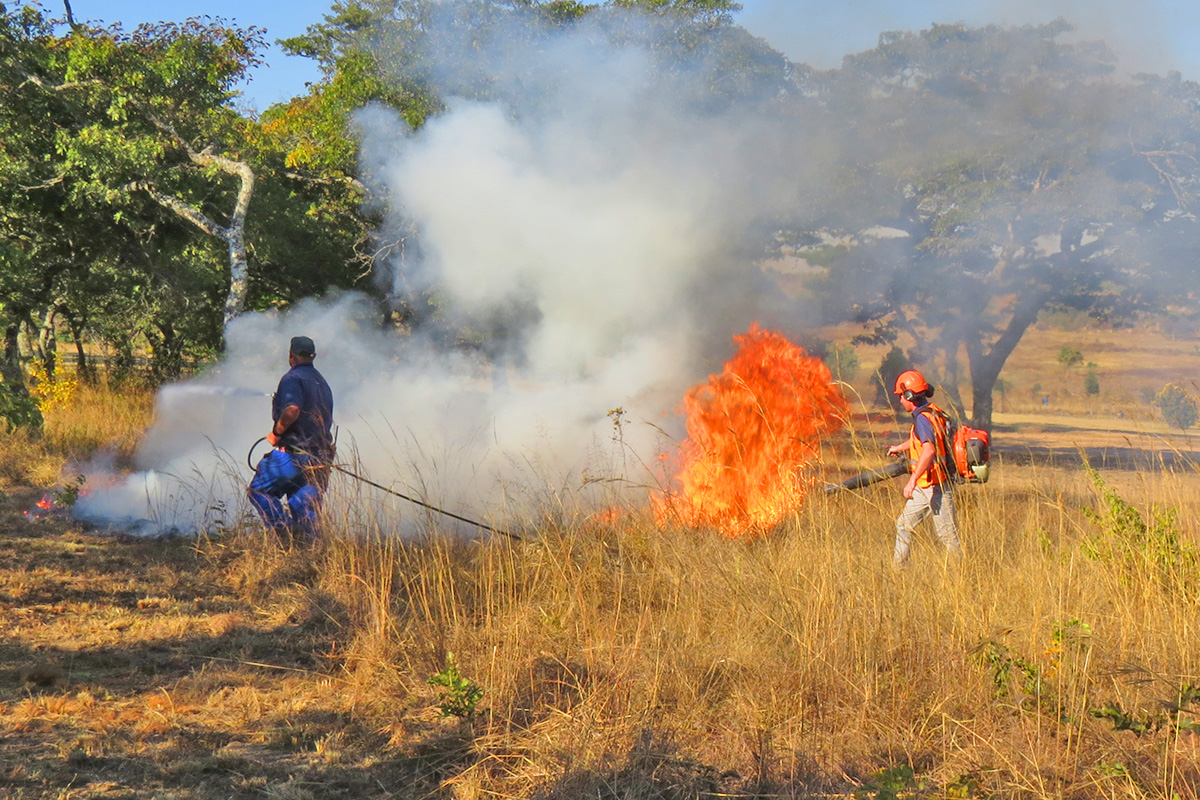How to burn a proper firebreak in Zimbabwe
For farmers and foresters in Zimbabwe who oversee vast areas of land, creating and maintaining proper firebreaks is an essential duty. Firebreaks help to keep uncontrolled fires contained and stop them from spreading, which protects livestock, property, and the environment.
We cannot understate the importance of firebreaks in supporting the larger fire safety initiatives, as well as your property and your neighbours’ land. Landowners need to know specific guidelines and methods for constructing firebreaks.
The efficiency of these barriers is largely influenced by the time taken for their preparation and burning. It is best to start firebreak preparations well in advance of the peak fire season, which is usually in the early spring (August to September). Firebreaks should be burned in May and June, and maintained throughout winter. This gives plenty of time to make the necessary adjustments, like removing vegetation and debris from the firebreak lines.
Preparing your firebreaks too late in the season leaves you at risk of higher temperatures and more dry vegetation, which can quickly turn a small fire into an inferno. The chance of the fire escaping the designated boundaries is decreased when proper preparation is done long in advance, ensuring that the surrounding vegetation is not overly dry when the time comes to burn.

Steps to burn a firebreak
Ideally, the firebreaks should be burned in the early morning or late afternoon when the weather is quite cool and the winds are calm or steady. There are a few crucial steps to follow when burning these lines.
1. First and foremost, the firebreak’s position and width are important. When possible, firebreaks should follow natural borders like roads, rivers, or existing clearings. The surrounding vegetation and the potential fire risk will determine the firebreak’s width. In general, a minimum of 10 metres is advised; wider firebreaks give you a larger margin of safety. You’ll also need to cut the grass and reduce the amount of dry vegetation within 15m of the firebreak.
2. All flammable materials must be removed from the firebreak area before burning. This includes raking away any leaves or garbage, removing dry sticks, and cutting down tall grass. As a result, there is less fuel for a fire to spread across this strip of land. It’s best to burn in favourable weather, preferably with mild breezes blowing away from sensitive places, including nearby properties, homesteads, or forests. Steer clear of burning during the warmest part of the day or when there are heavy winds.
3. After the vegetation has been reduced, burning should be done very carefully and with meticulous planning. Tell your neighbours and the local fire department that you plan to burn firebreaks and give them the date and approximate time beforehand. To contain the fire, make sure you have enough water, blowers, beaters (such as wet sacks fastened to poles), and enough personnel on hand.
4. The burning procedure should be controlled and methodical. To determine how the fire will behave under the given circumstances, start by lighting a small test fire. After you are certain that the circumstances are right, start burning along the firebreak’s upwind side and let the fire spread gradually into the cleared area. To stop any escaping flames, have staff members continuously observe the fire line. If a flame leaps across the firebreak, be ready to put it out right away. Burning should ideally be done in sections to improve control.
5. Guide the fire with Husqvarna blowers. By blowing wind over the tops of flames, you can easily control their direction. If the fire gets too intense, aim the blower at the base of the flames to extinguish them. Use a portable water tank and spray (available at Cutting Edge) to dowse the surrounding areas and to reduce the intensity of the fire.
6. Once the firebreak is burned, ensure that every ember has been completely extinguished. You can use backpack water guns, called fire cans, or Hunter Firefighters to shoot water onto the embers. Check the firebreak once the burn is over to make sure there aren’t any smouldering embers that could catch fire again. A well-burned firebreak should be a strip of bare dirt or ash, free of any flammable materials.
For firebreaks to remain effective throughout the season, regular maintenance is necessary, such as removing any regrowth of vegetation and fallen leaves and sticks. Husqvarna blowers can be used to blow debris away from the firebreak and offer a fast and effective way to maintain the bare line.

Cutting Edge supplies firefighting equipment
Farmers and foresters may be familiar with Husqvarna and Hunter tools, which are supplied by Cutting Edge. But did you know that we also stock innovative products for burning firebreaks and fighting fires? These include Husqvarna blowers, water pumps and brushcutters, as well as Hunter fire cans and firefighters (portable water tanks with high-pressure hoses).
Efficient fire control is important for protecting Zimbabwe’s forest and agricultural resources. Cutting Edge is dedicated to helping Zimbabwean farmers and foresters defend their land and means of subsistence against the destructive effects of veld fires. To find out more about our range of firefighting tools, please contact us today.
___
Cutting Edge is the leading supplier of Husqvarna, GARDENA and Hunter products in Zimbabwe. We bring you the best tools in the business with world-class service and after sales care. Follow us on Facebook and Instagram for the latest news and product offerings from our brands.

